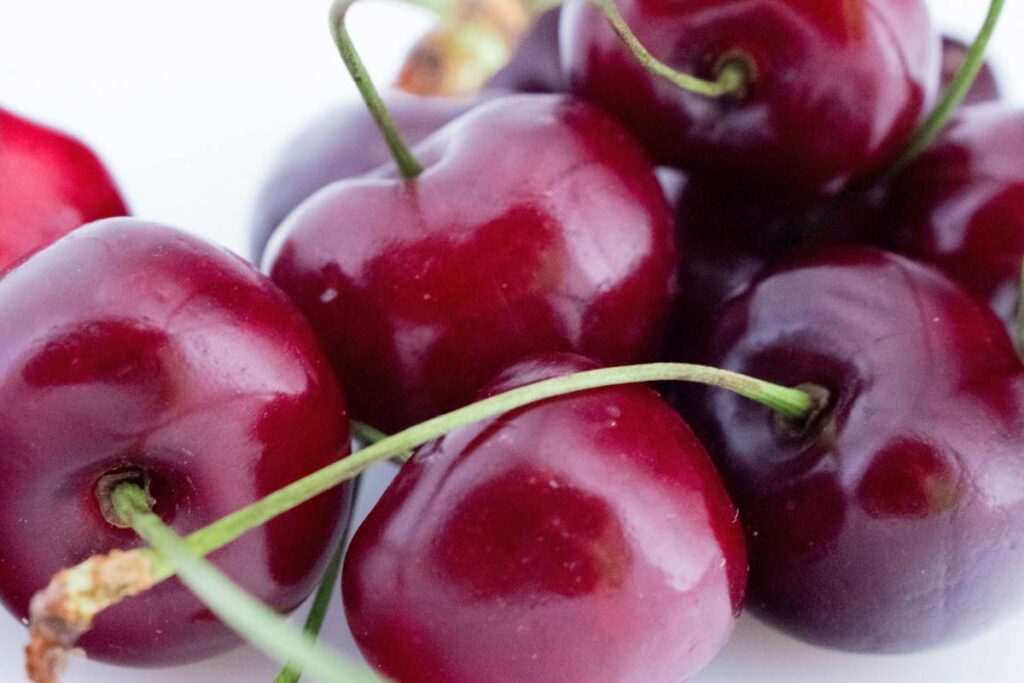Last updated on October 23rd, 2023 at 08:31 pm
In early summer, the first cherries are ripe. However, if you want to enjoy a rich cherry harvest, you should keep a close eye on the weather and not wait too long with the harvest. A heavy downpour and the small bright red fruits rip open. Insects and fungi take advantage of this opportunity and feast on the juicy flesh that oozes out of the sweet cherries. But why do cherries burst when it rains? And how can it be prevented that the delicious cherry crop just bursts?
Contents
The fruits of modern cherry varieties are under pressure
It is usually the large cherry varieties that burst after a rainstorm. There are several reasons for this. Cherries are known to be so delicious because they contain a lot of sugar. But the sugar not only makes the cherries sweet, it also attracts a lot of water.
How the sugar attracts the water can be observed with a bowl of sugared strawberries. No sooner has the sugar been sprinkled over the strawberries than the strawberry juice starts to ooze out of the fruit. With cherries, it’s the other way around. Here the sugar is in the cherry. When it rains, the fruits are completely wetted with water drops. The rainwater now penetrates through small pores on the skin of the cherry into the interior of the fruit. There, the sugar binds the water.
The fruit skin is only permeable on one side. This means that only the water can penetrate through the skin. The sugar particles, on the other hand, are too large to pass through the small pores to the outside. Therefore, the sugar that binds the water remains in the cherries and continues to attract liquid there. As a result, more and more water accumulates in the cherries. Chemists refer to this process as osmosis. The cherries become completely saturated. After some time, the pressure in the cherries from the large amount of water is so great that they burst.
At harvest time, the sugar content in the cherries is at its highest. The riper the fruit, the more likely it is to burst after the next rain shower.
Plump cherries with cracked skin
However, it is not only the sugar content in the cherries that plays a role, but also the size of the fruit. Retailers often offer only table varieties. These cherries have been bred to be extra large and plump. The disadvantage: the plump table varieties burst more easily. When the cherries are green, the skin is still thick enough. However, as the cherries ripen, they become larger. The cherry skin stretches and becomes thinner and thinner.
Over time, only a thousandth of a millimeter of thin skin envelops the cherries, which weigh about 10 grams. The increasing stresses cause the cherry skin to crack. In addition to the pores, rainwater now seeps into the interior of the cherry through the fine cracks in the skin. Thus, the fruit absorbs the water even faster.
How can the bursting of cherries be prevented?

Among sweet cherries, there are new cultivars whose fruits are more burst-resistant. On the other hand, there is an even wider range of old cherry varieties that have stood the test of time. Old varieties have many advantages over modern cultivars. The cherry trees are more robust, healthier and produce a good harvest, even if the weather is not so optimal in a given year.
One of the best varieties: “Kunzes Kirsche”.
A particularly tasty sweet cherry among the old varieties is “Kunzes Kirsche”. It belongs to the best heart cherries. The trees are very healthy and regularly produce a rich harvest. The yellow-red fruits are very sweet and soft. Rain does not bother the “Kunzes Kirsche”, as the fruits are burst-resistant.
The variety is an early cherry, so the cherry fruit fly has no chance to attack the red fruits. Before the flies become active, the tasty cherries are already ripe and harvested. “Kunze’s cherry” is a good pollinator for almost all other cherry varieties. It is suitable in scattered orchards and is ideal for larger home gardens and self-suppliers. The cherries can be used as a table fruit, compote or jam.


